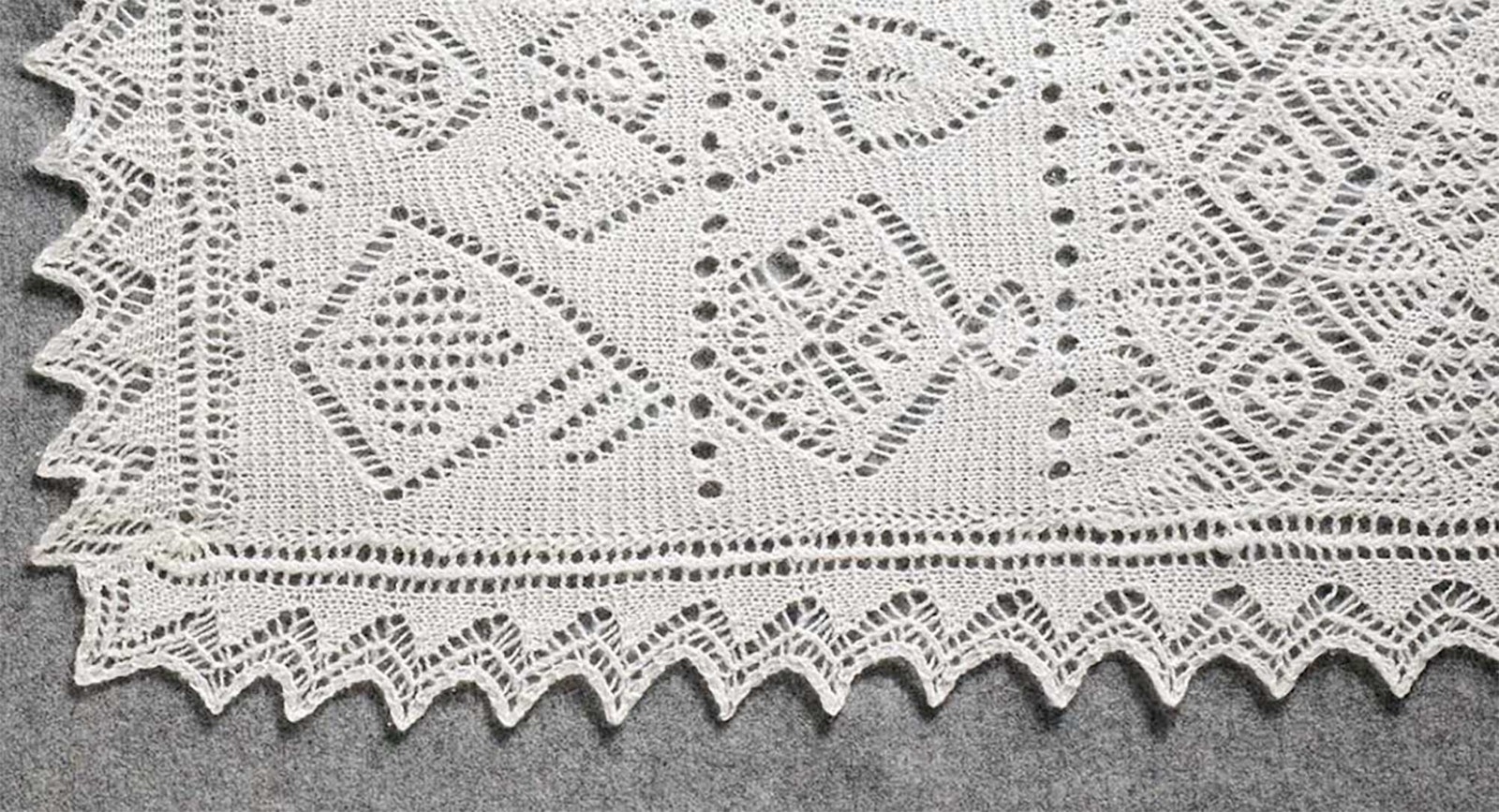In 2005, the owner of a damaged shawl asked Margaret Stove to restore the family heirloom as closely as possible to its original state. The Shetland-style shawl was likely more than 100 years old and had been knitted by Margret (Thomson) Cheyne (1817–1936), also fondly known as “Granny Cheyne.”
Stove, who describes the restoration of the Cheyne shawl in her book Wrapped in Lace: Knitted Heirloom Designs from Around the World, here explores the Shetland-lace tradition.
—Editor
The wool for the shawl that I repaired was spun in the Shetland yarn tradition for fine shawls: a two-ply worsted with little twist. Having had the opportunity to spin Shetland wool from a flock in Unst, one of the North Isles of the Shetlands, that provided fleece for fine shawls, I have been able to compare that wool with fleece grown here in New Zealand. Fine crossbred wool crossed with Merino is similar indeed to the native Shetland wool, and it is understandable why Margret would have chosen it for her shawl. Although the designs that Margret used were traditional patterns from her homeland, I learned when working out the patterns for repairing the shawl that she had made adaptations to accommodate the number of stitches and rows in each element of the design, especially in the borders, so that they all worked in harmony.
Margaret Stove’s elegant Shetland-lace scarf inspired by an original Shetland shawl knitted by Granny Cheyne after she immigrated to New Zealand. Photo by Joe Coca.
Shetland lace patterns fit Mary Walker Phillips’s definition of “creative lace” perfectly: They are excellent examples of using knitted lace (pattern every row resulting in a single thread between the holes), lace knitting (pattern on alternate rows resulting in two twisted threads between the holes), and eyelet lace (in which the holes are separated by knitted fabric). These variations give the knitter the freedom to make the elaborate designs that we see in these shawls.
—Margaret Stove
Margaret Stove lives in New Zealand and uses the skills that she has acquired in figuring out the structure of knitted lace to create new designs and, more recently, to conserve and restore heritage lace. This latter interest gives a new life to the creations of expert knitters of past generations and ensures that their work will continue to give pleasure. Her books Creating Original Hand-knitted Lace (Berkeley, California: Lacis, 1995) and Wrapped in Lace (Loveland, Colorado: Interweave, 2010) detail the results of her research in this area.
Read more about Granny Cheyne in Margaret Stove’s article, “Granny Cheyne: A Shetland Knitter in New Zealand,” or knit Stove’s Shetland lace scarf, download a copy of the May/June 2013 issue of PieceWork.


